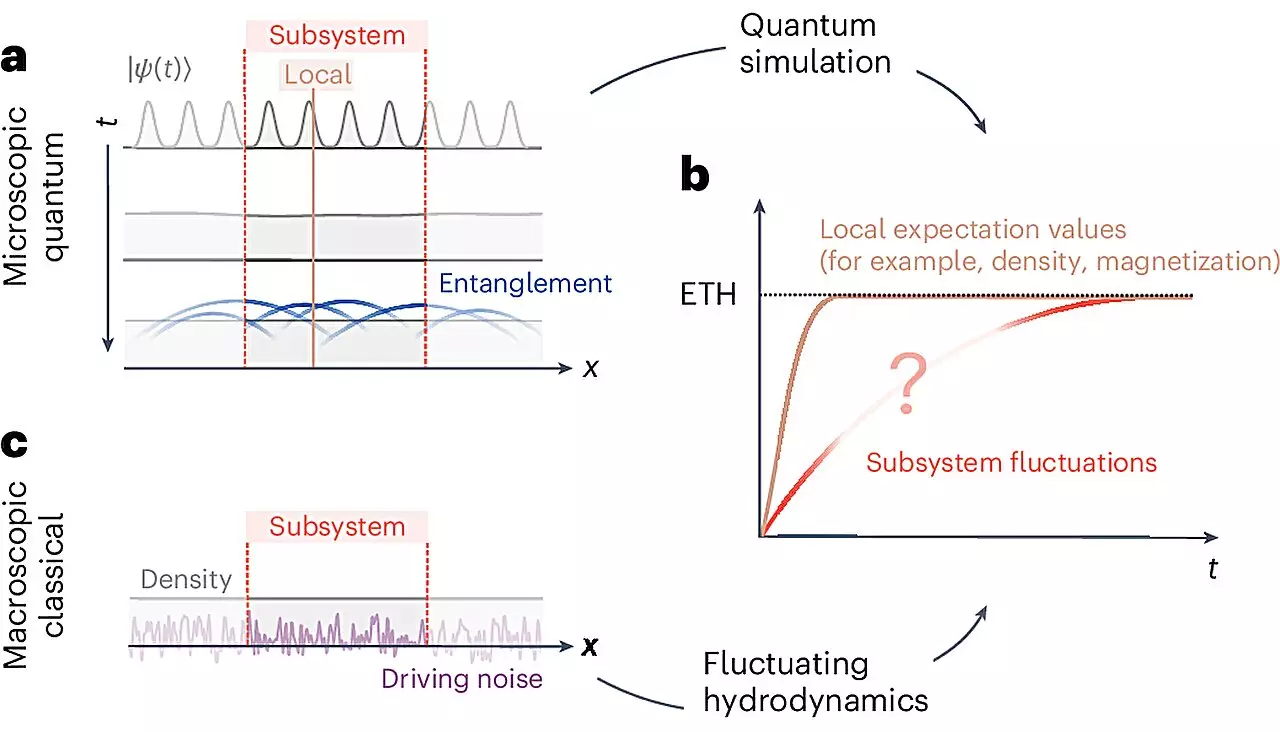When it comes to systems with many small particles interacting, the complexity and chaos can be overwhelming. However, some of these systems can surprisingly be described using simple theories. But what about the world of quantum physics?
A team of researchers led by Professor Monika Aidelsburger and Professor Immanuel Bloch from the LMU Faculty of Physics dove into this question about chaotic quantum many-body systems. Their findings suggest that these systems can be macroscopically described through simple diffusion equations with random noise, as revealed in a recent publication in Nature Physics.
The study highlights the concept of fluctuating hydrodynamics (FHD), where the erratic movements of particles can be described as white noise due to random collisions with individual molecules. This theory indicates that, under specific circumstances, the entire behavior of a system can be determined by a single quantity known as the diffusion constant, simplifying the macroscopic description of complex and chaotic systems without delving into microscopic interactions.
Chaotic systems are suspected to be describable by FHD, raising questions about the application of this theory to chaotic quantum systems. These systems operate under fundamentally different laws of physics compared to classical systems, characterized by phenomena such as uncertainty and entanglement, which challenge intuitive understanding and complicate calculations.
To investigate further, the research team studied the behavior of chaotic many-body quantum systems by observing ultracold cesium atoms in optical lattices. By preparing a non-equilibrium initial state and allowing the system to evolve freely, the team could measure density fluctuations and correlations over time, demonstrating that FHD can qualitatively and quantitatively describe the system.
This research provides crucial insight into the possibility of simplifying the description of chaotic quantum systems as macroscopic diffusion processes akin to Brownian motion. Despite the intrinsic complexity at the microscopic level, the application of FHD offers a streamlined approach to understanding and analyzing these intricate systems.
The exploration of chaotic quantum systems through the lens of fluctuating hydrodynamics opens up new avenues for comprehending the behavior of complex quantum systems. By bridging the gap between microscopic interactions and macroscopic descriptions, researchers can unravel the mysteries of quantum mechanics with greater clarity and simplicity.


Leave a Reply